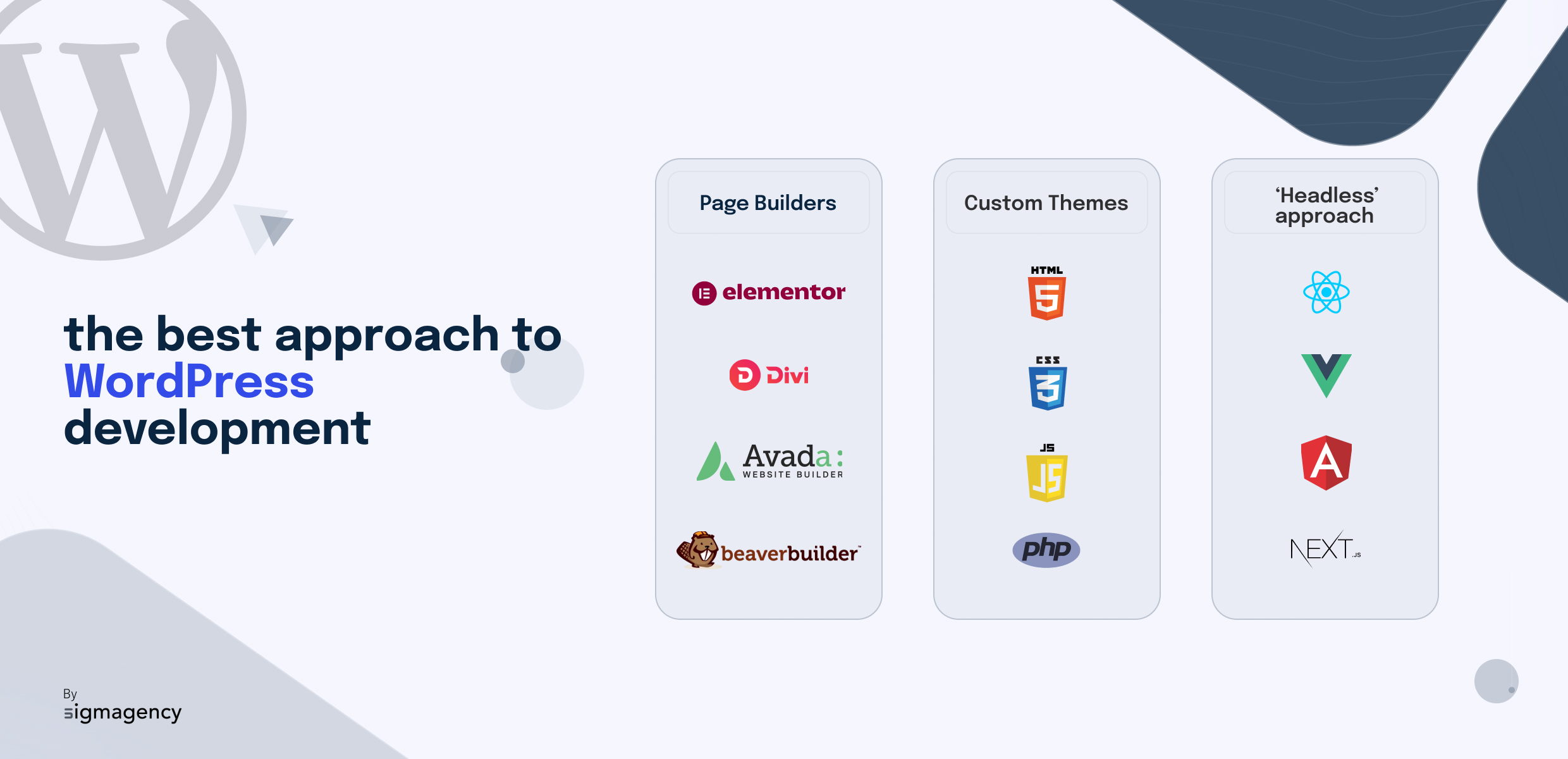What is WordPress?
WordPress is an open-source content management system (CMS) that allows you to create and manage websites. Since its launch in 2003, WordPress has evolved from a simple blogging platform to one of the most widely used CMS platforms worldwide, powering nearly 40% of all websites. This attests to its flexibility and popularity, thanks to its user-friendliness and versatility.
With thousands of themes and plugins available, almost any type of website can be created using WordPress.
WordPress Development Approaches
There are three main approaches to WordPress development: page builders (like Elementor), custom theme development, and the headless approach. Each method has its own advantages and disadvantages, and the choice depends on technical skills, needs, and budget.
Page Builders
A page builder is a user interface that allows you to create and customize your website by dragging and dropping elements. Among these builders, Elementor is one of the most popular, followed by Divi.
One of the main advantages of page builders is that they enable you to create an attractive website quickly and easily, without requiring extensive coding knowledge. This makes them an ideal “low-code” solution for projects with a tight budget.
However, this ease of use has its drawbacks. Page builders make you dependent on paid licenses and updates, which can sometimes cause issues. Additionally, site performance may be impacted as these builders often use heavy code that can slow down the site. Finally, while they offer some flexibility, page builders can be limiting if you have specific design or functionality requirements.
Custom Themes
A custom theme offers nearly unlimited design freedom, allowing your site to stand out and precisely meet your needs. It requires coding skills (HTML, CSS, JavaScript, PHP) or an investment in a developer or development agency.
A custom theme is generally more performance-efficient than a site created with a page builder. By removing unnecessary code and optimizing the existing code, the site’s loading time can be greatly improved, benefiting user experience and SEO. Moreover, a custom theme doesn’t make you dependent on specific licenses or subscriptions, and you have full control over the plugins and tools you want to use.
Another major advantage of custom themes is their scalability. Unlike page builders that can be limited by their built-in options, a custom theme can be easily modified and extended to meet the changing needs of your business. It’s a sustainable option that can grow with your company.
However, developing a custom theme requires more initial time and investment than using a page builder. Additionally, it may require technical skills for maintenance and updates.
Headless Approach
The headless approach is a new trend in web development. It involves separating the front-end (the “head”) from the back-end, which means you can use WordPress to manage your content but use another technology to present it to users.
This offers great flexibility and can improve site performance, especially if you use modern technologies like React or Vue.js for your front-end. This approach also enables the creation of richer and more interactive user experiences.
However, the headless approach requires significant technical expertise and is generally more costly. It is better suited for complex projects that require extensive customization.
In conclusion
Each WordPress development approach has its own strengths and weaknesses, and the choice depends on your needs, budget, and long-term goals. Whether you opt for a page builder, a custom theme, or a headless approach, one thing is certain: a well-designed and performant website is an investment worth making.
That’s where our agency can assist you. With our expertise in web development and extensive experience with WordPress, we can guide you through the different options and help you choose the one that best suits your project. Feel free to contact us to discuss your needs.
Jean d'Huart
Web developper




